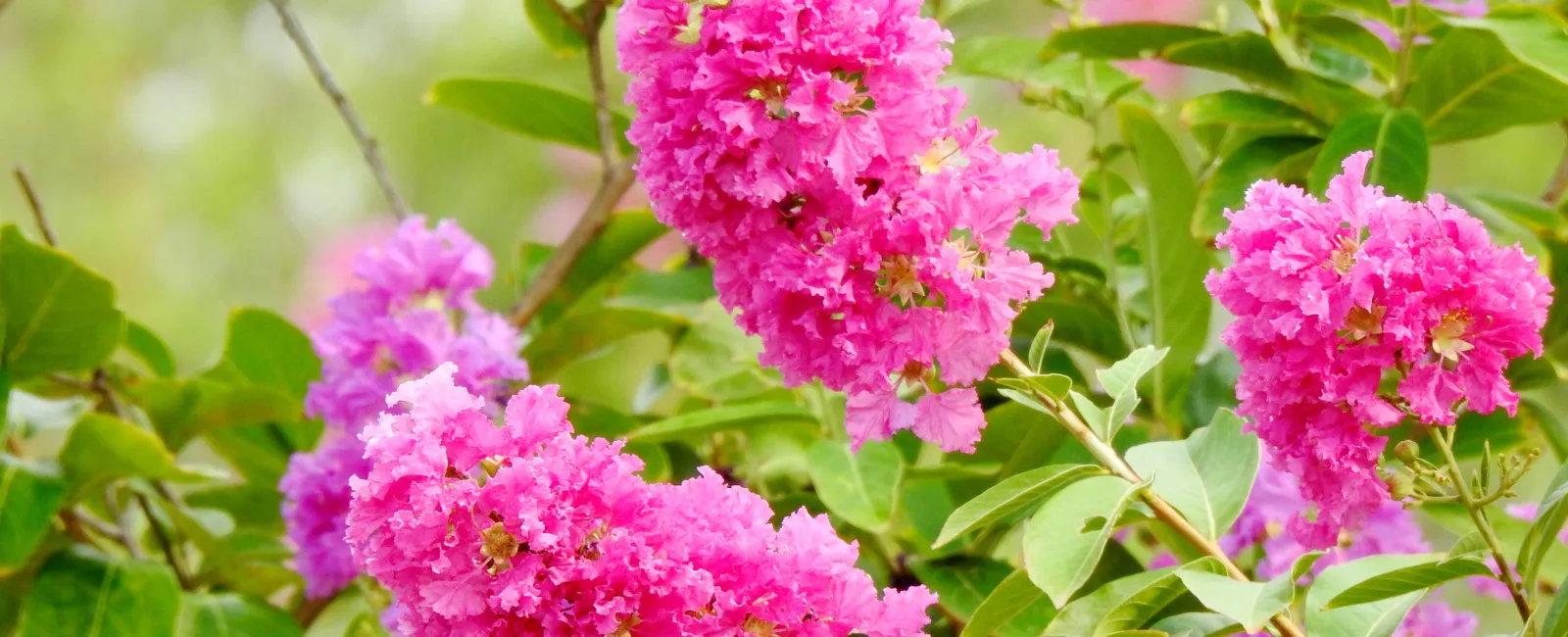
Purple flowering trees, with their enchanting hues and unique charm, have the power to transform any outdoor space into a vibrant and inviting haven. Their aesthetic appeal, ability to attract wildlife, and potential for stress relief make them a valuable addition to gardens, parks, and residential landscapes.
While these trees are generally low-maintenance, they may encounter issues related to soil quality, pests, diseases, pruning, or environmental stress. Understanding the potential causes of these problems and taking proactive measures to address them can ensure that your purple flowering tree thrives and continues to grace your surroundings with its breathtaking beauty.
In your journey to nurture and care for these arboreal wonders, remember that professional help from Atlanta arborists like those at Caldwell Tree Care is always available when needed. Their expertise can make a significant difference in preserving the health and vibrancy of your purple flowering tree.
Trees with Purple Flowers
Purple flowering trees come in a stunning array of varieties, each with its unique charm and personality. Let’s take a moment to meet a few of these captivating arboreal wonders:
Twilight Crape Myrtle
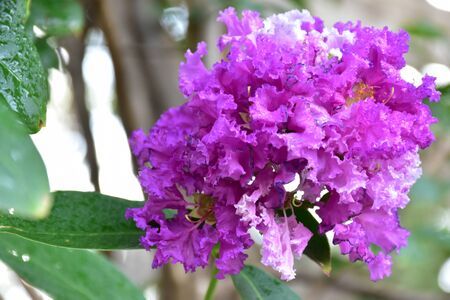
The Twilight Crape Myrtle is a true showstopper, with its velvety, deep purple blossoms that bloom during the summer months. This small to medium-sized deciduous tree can reach heights of 10 to 20 feet, making it ideal for both residential gardens and larger landscapes. Its vibrant purple flowers are a magnet for pollinators, adding a touch of life and color to your outdoor space.
Muskogee Crape Myrtle
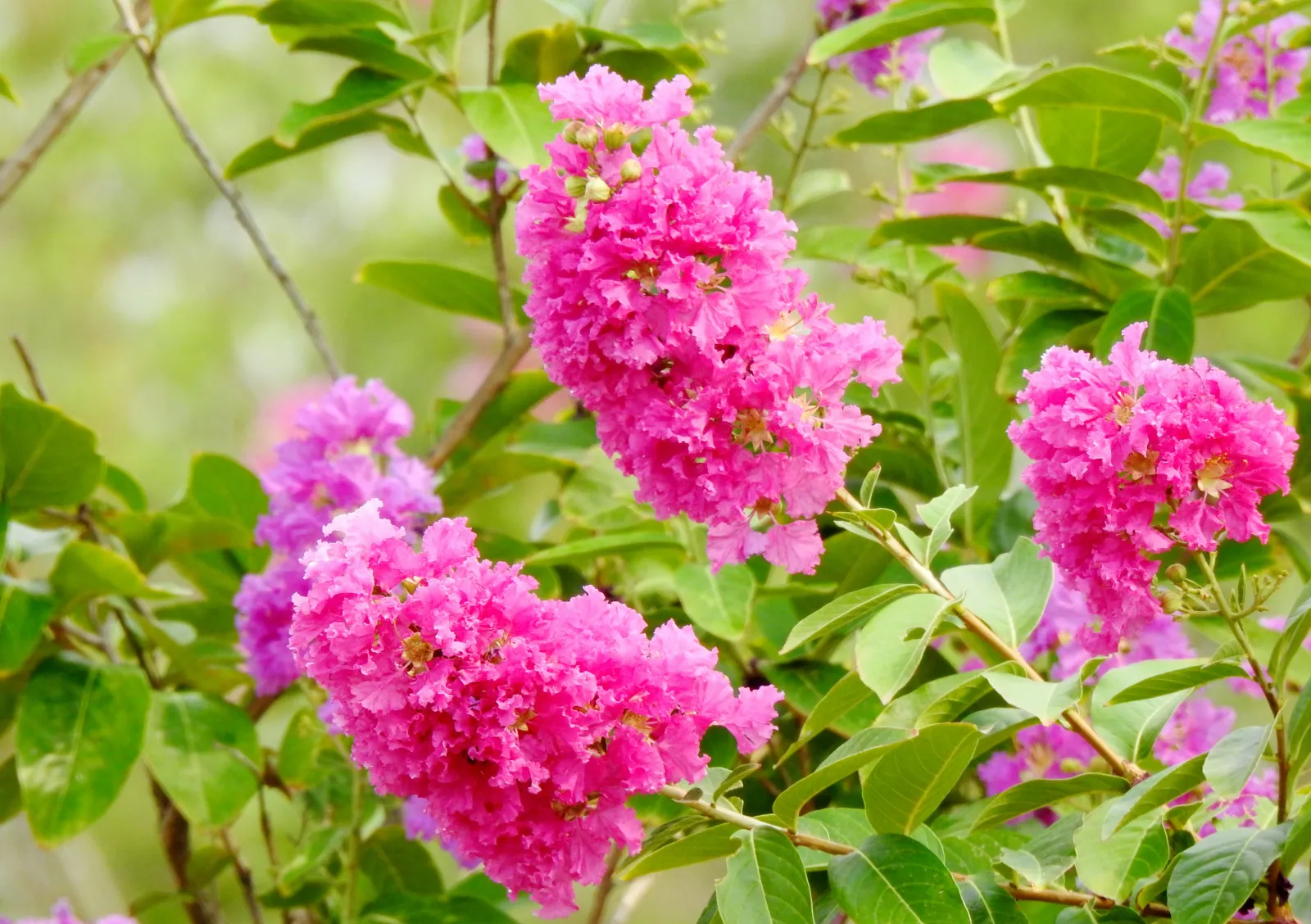
If you’re searching for a purple flowering tree that boasts elegance and grace, look no further than the Muskogee Crape Myrtle. This lovely specimen flaunts stunning lavender blooms that gracefully droop from its branches in the summer. With a mature height of around 15 to 20 feet, this tree is a favorite choice for those aiming to add a touch of sophistication to their garden.
Miss Kim Lilac Tree
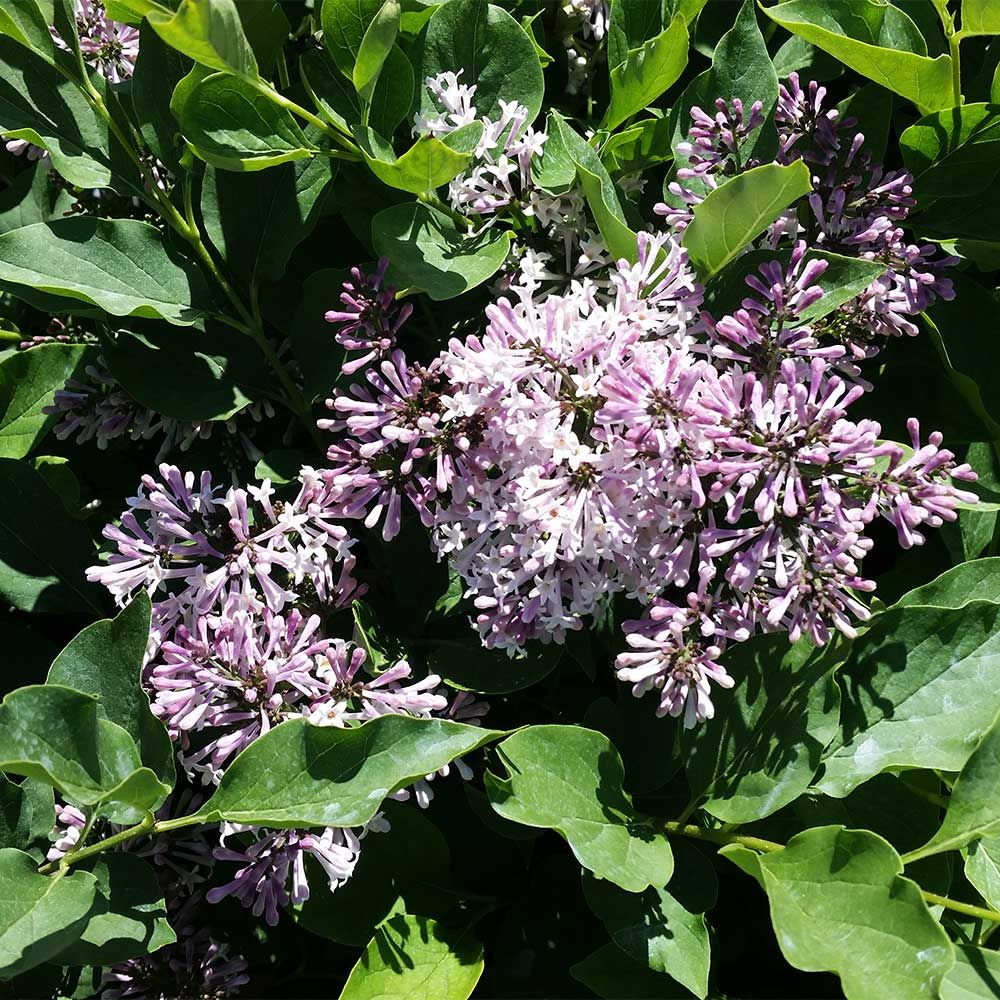
The Miss Kim Lilac Tree is a beloved favorite among gardening enthusiasts. This tree adds a delightful aroma to your outdoor space with its fragrant lavender blossoms. Growing up to 10 feet tall, it’s a perfect fit for smaller gardens or large containers, making it a versatile choice for urban and suburban landscapes.
Vitex Chaste Tree

Known for its striking violet-blue spikes of flowers, the Vitex Chaste Tree brings a sense of mystique to any garden. This drought-tolerant, small deciduous tree can reach heights of 10 to 15 feet, and its unique, aromatic foliage adds to its allure. Bees and butterflies can’t resist this tree, making it a valuable addition to any pollinator-friendly garden.
Royal Purple Smoke Tree
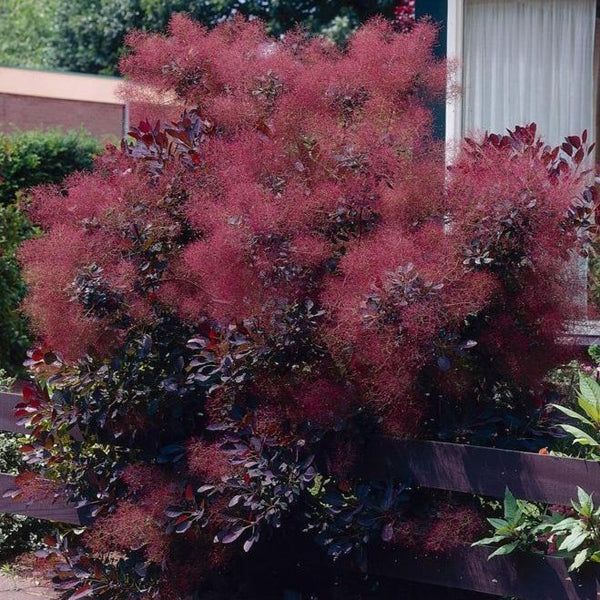
The Royal Purple Smoke Tree earns its name from the striking appearance of its flowers, which resemble billowing clouds of purple smoke. These ethereal blossoms make this tree a conversation piece in any landscape. With a height range of 10 to 15 feet, it can be incorporated into various garden designs, adding an element of whimsy and intrigue.
The Allure of Purple Flowering Trees
What makes purple flowering trees so appealing? Beyond their vibrant color palette and diverse varieties, these trees offer a range of benefits for both the environment and the human soul. Here are some reasons why you should consider adding one to your landscape:
Aesthetic Appeal
The most apparent reason to plant a purple flowering tree is the sheer beauty they bring to your surroundings. Their vivid and eye-catching blooms create a focal point in your garden, turning heads and drawing admiration from all who pass by. These trees infuse a sense of elegance and sophistication into any landscape, making them a valuable addition for homeowners and gardeners.
Wildlife Attraction
Purple flowering trees are not just a treat for the eyes; they also attract a variety of wildlife. Bees, butterflies, and other pollinators are drawn to the vibrant blossoms, ensuring a lively and dynamic garden ecosystem. By planting these trees, you contribute to the well-being of local wildlife and promote biodiversity in your area.
Seasonal Splendor
Many purple flowering trees are deciduous, meaning they shed their leaves in the winter. While this might sound like a drawback, it actually adds to their charm. When they burst into bloom in the spring and summer, the contrast between their vibrant flowers and bare branches creates a dramatic and memorable spectacle. Watching these trees transition through the seasons is a rewarding experience for any nature lover.
Stress Relief
The color purple has long been associated with relaxation, spirituality, and calmness. Having purple flowering trees in your outdoor space can create a tranquil environment that helps reduce stress and promotes a sense of well-being. Whether you’re enjoying a cup of tea on your porch or meditating in your garden, these trees contribute to a serene atmosphere.
Easy Maintenance
While purple flowering trees may appear exotic and high-maintenance, many of them are surprisingly easy to care for. Most require little more than regular pruning, adequate watering, and occasional fertilization. With the right care, they can thrive and continue to grace your landscape with their vibrant blooms for years to come.
Potential Causes of Purple Flowering Tree Issues
While purple flowering trees are generally hardy and low-maintenance, they can face a few challenges that might affect their health and beauty. Here are some potential issues to watch out for:
Soil Quality
The quality of your soil plays a crucial role in the health of your purple flowering tree. These trees often thrive in well-draining soil that is slightly acidic. If your soil is too compacted or alkaline, it can lead to poor growth and reduced flowering. Regular soil testing and appropriate amendments can help address this issue.
Pests and Diseases
Like all plants, purple flowering trees can fall victim to pests and diseases. Aphids, scale insects, and fungal infections are common culprits. Regular inspection and early intervention are essential to keep these issues in check. Consider using environmentally friendly pest control methods to protect your tree without harming beneficial insects.
Improper Pruning
While pruning is essential for maintaining the shape and health of your purple flowering tree, improper pruning can have adverse effects. Cutting too much or at the wrong time of year can lead to reduced flowering and even damage the tree’s structure. Following proper pruning techniques or consulting with a professional arborist for guidance is essential.
Environmental Stressors
Extreme weather conditions, such as drought or excessive heat, can stress your purple flowering tree. These trees may require additional watering during dry spells to ensure they thrive. Mulching the base of the tree can help retain moisture and regulate soil temperature.
What to Do When Your Purple Flowering Tree Faces Issues
If your purple flowering tree encounters any of the problems mentioned above, it’s crucial to take action promptly to prevent further damage. Here are some steps you can take to address these issues:
Soil Improvement
If your soil quality is a concern, consider soil testing to determine its pH and nutrient levels. Based on the results, you can amend the soil to create a more suitable environment for your tree. Adding organic matter and adjusting pH levels can go a long way in promoting healthy growth.
Pest and Disease Management
Regularly inspect your tree for signs of pests or diseases. If you notice any issues, consult with a local arborist or horticulturist to identify the problem accurately. They can recommend appropriate treatments, such as insecticidal soaps or fungicides, to address the issue without harming beneficial insects or the environment.
Pruning with Care
When pruning your purple flowering tree, always follow best practices. Trim away dead or diseased branches, and avoid excessive cutting. If you’re uncertain about proper pruning techniques
